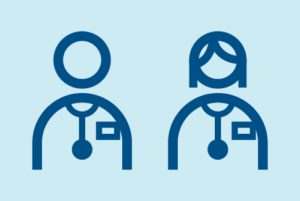Can a hospital provide telehealth services using out-of-state physicians who are not licensed in California?
Yes, during the COVID-19 emergency the state Emergency Medical Services Authority has set up a quick process for hospitals to be able to use health care practitioners licensed in other states. For details, go to https://emsa.ca.gov/covid19/ . (4/10)
Can hospitals bill Medicare for telehealth or other virtual services when provided to patients in their own homes?
CMS’s COVID-19 FAQs on Medicare Fee-for Service Billing provide responses to questions on when hospitals can bill Medicare for services provided to a patient in their home when the patient’s home has been made a provider based department of the hospital. (7/22)
Is there any federal guidance on how we can utilize telehealth services during this emergency?
Yes, the Centers for Medicare & Medicaid Services (CMS) has issued a fact sheet and frequently asked questions that provide guidance on how hospitals can use telehealth services under the Medicare program as a result of recently enacted legislation. In addition, CMS has prepared an FAQ on the use of telehealth by private health insurance plans. (4/10)
Where can I find information about telehealth services covered by health plans and insurers?
Both the Department of Managed Health Care and the Department of Insurance have issued guidance directing health plans and insurers to provide increased access to telehealth services during the COVID-19 emergency. (4/10)
Can hospitals use popular applications such as FaceTime, Skype, or Google Hangouts to provide telehealth services?
Yes, the federal Health and Human Services Office of Civil Rights has issued a notice of enforcement discretion announcing it will not impose penalties for noncompliance with HIPAA rules in connection with the good faith provision of telehealth using such non-public facing audio or video communication products during the COVID-19 nationwide public health emergency. However, public facing platforms such as Facebook Live, Twitch, TikTok, and similar video communication applications should not be used in the provision of telehealth by covered health care providers. (4/10)
Can providers from other states provide telehealth services to patients in California?
The federal government has waived requirements that physicians or other health care professionals hold licenses in the state in which they provide services for Medicare payment purposes — including for telehealth services — however, state law on licensure still applies. California’s Emergency Medical Services Authority has established a quick process for telehealth agencies and other entities, including hospitals, to obtain approval to use out-of-state personnel. (4/10)
Can Medicare telehealth services only be provided to patients that have been seen within the past three years?
No, the Coronavirus Aid, Relief, and Economic Security (CARES) Act removed the restriction that telehealth services only be provided to established patients who have been seen by the clinician within the past three years. CMS had previously announced it would not enforce this requirement. (4/10)
Can providers in rural health clinics (RHCs) and federally qualified health clinics (FQHCs) provide Medicare telehealth services to patients outside of their clinics during this emergency?
Yes, the CARES Act removed “distant site” restrictions, allowing RHCs and FQHCs to receive Medicare payment for telehealth services delivered by a provider in their clinics to a patient outside of their clinic, including in their home. CMS guidance provides more information on payment and billing for telehealth services provided by RHCs and RQHCs. (4/20)
Can providers use telehealth to meet “face-to-face” encounter requirements?
For Medicare beneficiaries with end-stage renal disease who receive home dialysis, telehealth can be used for the monthly clinical assessment without first receiving the initial face-to-face clinical assessment and ongoing face-to-face assessments that would typically be required. In addition, telehealth visits with a physician or nurse practitioner can be used to satisfy face-to-face encounter requirements to recertify hospice care eligibility. (4/10)

